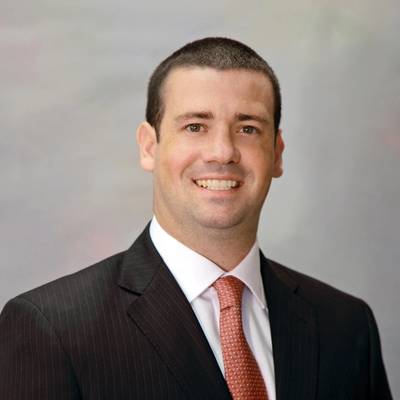Interview: Tracy Zea, President & CEO, Waterways Council Inc.
We recently checked in with Tracy Zea, Waterways Council Inc.’s new President & CEO, on what’s in store for the U.S. inland waterways for the remainder of 2020.
To start, give us some insight on your background and how you came to lead WCI.
I was born and raised in Chandler, Ariz., and attended South Dakota State University, receiving a degree in Political Science. After college, I found my way to Washington, D.C. via an internship with Senator Thune (R-S.D.). After the internship, I was hired by the House of Representatives, Transportation and Infrastructure Committee. During my time with the Committee, I served in various positions, but the one that relates the most to my position as Waterways Council, Inc. President/CEO is my time on the Water Resources and Environment Subcommittee. During my time on the Subcommittee, I played an integral role in the enactment of the Water Resources Reform and Development Act (WRRDA) of 2014. In 2015 I joined WCI as Director of Government Relations. In this position I advocated for WCI’s priorities with Congress, the Administration, and the Corps of Engineers.
For those not in the know, please describe the shape and size of WCI’s membership today.
WCI is comprised of a diverse membership of approximately 165 members, primarily operators, shippers, organized labor and conservation groups.
What are your top priorities as you begin your new role at WCI?
To continue achieving legislative victories that will advance the modernization of the inland waterways system. There has been significant progress made on the inland waterways transportation system since 2014, but there is a real opportunity in the Water Resources Development Act (WRDA) of 2020 to enhance and modernize the system for years to come. WCI’s top priority is to achieve a cost-share adjustment for construction and major rehabilitation projects on the inland waterways.
Much of the Unites States’ inland waterway infrastructure is in need of maintenance and repair. How dire is the situation, and where do you see most urgent needs?
The Corps of Engineers built most of the nation’s locks and dams in the early 20th century, and more than 70% of the lock chambers are, at over 50 years old, past their design life, with an overall average age of 71 years. All the infrastructure require maintenance, and the Corps continues to provide that to the best of the financial resources provided to them by Congress. They do an amazing job to ensure the reliability of the system. Meanwhile, some projects are being modernized. Congress has recognized the need to invest in the maintenance of these structures to provide operators and shippers reliability. An increase in funding over the last five years for operation and maintenance provided by Congress has also been extremely helpful. Maintenance of critical infrastructure will always remain a high priority across every mode of transportation.
Overall, how would you rate the Trump Administration for its efforts to address inland infrastructure needs? What have been some of the successes and failures?
The inland waterways have several champions within the United States Congress. Congress, regardless of party, has continued to invest in the inland waterways over the last seven fiscal years, whether through the appropriations or authorization process. On the appropriations front, over the last two years Congress has adjusted the cost-share for Chickamauga Lock to ensure that all four top priority navigation construction projects could receive efficient funding. Efficiently funding these construction projects remains a high priority because it allowed for the Olmsted Locks and Dam project to become operational four years ahead of its “adjusted” schedule. The Lower Mon project is estimated to become operational in 2023, which is four years ahead of schedule. Kentucky Lock is estimated to become operational three years ahead of schedule, and Chickamauga is estimated to become operational four years ahead of schedule. This success will continue or improve if Congress adopts WCI’s top priority of adjusting the cost-share in the WRDA 2020 bill.
Please describe the takeaways (both good and bad) and potential impacts from America’s Water Infrastructure Act 2020?
WCI’s top priority of adjusting the cost-share for construction and major rehabilitation of projects is included in the America’s Water Infrastructure Act of 2020. The cost-share is adjusted to 65% general fund revenue/35% Inland Waterways Trust Fund. If this adjustment is enacted into law, it could potentially provide an additional billion dollars toward construction and major rehabilitation of inland waterways modernization projects. Currently, there are 18 modernization projects that are valued at just over $8 billion, and by adjusting the cost-share, these projects will significantly be expedited toward completion.
Unfortunately, no business discussion today can be had without discussing COVID-19. Can you provide insight on how this business interruption event has, and will impact inland marine operations?
The inland waterways industry has shown that it is not immune to COVID-19. Significant precautions have been taken by companies to keep their employees safe and healthy. The Inland Waterways User Board announced at its meeting in July that IWTF fuel receipts are down for FY20 as a result of the COVID-related economic downturn. The receipts were tracking almost identically to FY19 until February, when we saw almost a flat line. Expected total projections may be significantly lower than FY19.
While much of the chatter around COVID-19 is negative, if nothing else it has illustrated the importance of supply chains and the maritime industry’s role in an efficient, cost-effective means to bring products to markets. From where you sit, is this message getting through to legislators?
As the Department of Homeland Security early pointed out in the COVID-19 crisis, maritime workers are essential. The commerce this nation depends upon moves on the inland waterways in the most cost-competitive, environmentally friendly, traffic congestion-relieving, and safest way. Congressional champions believe in the inland waterways and will fight for it now and in the future.
















